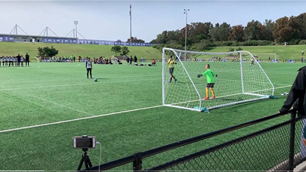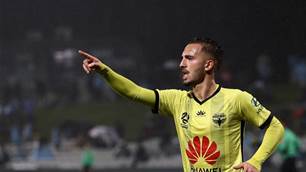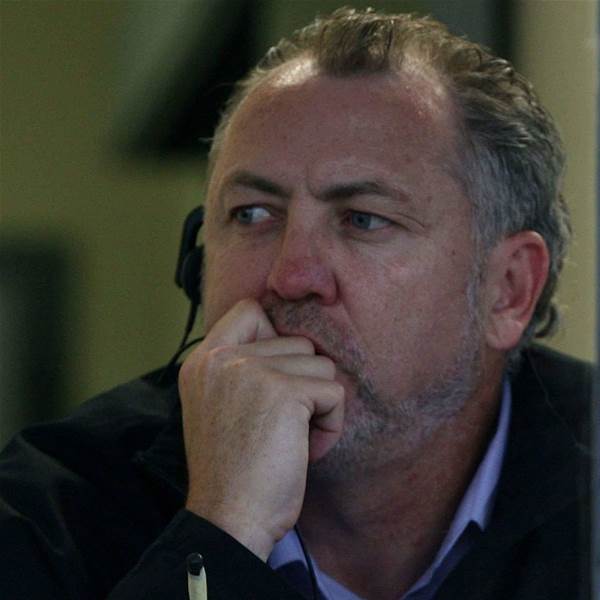ANALYSIS: Perth Glory's table-topping National Youth League side could be the key to help revive flagging fortunes at Members Equity Stadium.
Less than twenty-four hours after the first-team slumped to another abject defeat at the hands of Melbourne Victory, Perth Glory’s Youth Team were defeating the same opponents to maintain their 100 per cent start to the inaugural National Youth League.
At first glance, this result would appear to offer little to console Glory’s long-suffering supporters who are again coming to terms with witnessing their side being out-fought, out-thought and outclassed. And yet the success enjoyed by Gareth Naven’s well-drilled outfit in the modest surroundings of Green Gully Reserve may in fact provide an insight into the possible future direction of the ailing West Australian club.
With a third of season four already gone and Glory clearly no closer to adjusting to life in the A-League, it is little wonder that radical solutions are being suggested in a bid to revive the club’s flagging fortunes.
Some involve a change of ownership, some a total re-branding of football in Perth and others a combination of both with a new coach thrown in just for good measure.
It is quite possible, however, that a less drastic course of action could ultimately prove to be Glory’s salvation.
If Dave Mitchell has indeed been handed carte blanche as far as the 2009-2010 campaign is concerned, however, then he must at least attempt to break the club’s cycle of failure by taking a new direction. The focus of that new direction must surely be upon youth.
With no fewer than eighteen players out-of-contract at the end of the season, Mitchell has the perfect opportunity to clear out the overpaid, under-achieving deadwood that has dragged Glory down into the depths of despair.
In the meantime, he must use the remainder of this season to blood as many of the promising youngsters as possible, while also ensuring that the club keeps a closer eye on some of the emerging talent within the ranks of the State League.
Throwing half-a-dozen youngsters into a losing A-League side would of course be hugely counter-productive, but easing one or two into the squad on a regular basis would quickly establish who is ready for the step up and who isn’t. It is also important to bear in mind that the term National Youth League is something of a misnomer.
These are not, by and large, raw schoolboys totally ill-prepared for the rigours of senior football. Most are in their late teens and in other footballing nations would be considered plenty old enough for first-team action.
Brent Griffiths is a case in point. Having spent a couple of years on Blackburn Rovers’ books, he opted to return to Australia and gain experience rather than slog it out for Rovers’ reserve team with little if no chance of forcing his way into Paul Ince’s first eleven.
Composed, skilful and tough, he already looks a class act and yet when Dino Djulbic’s suspension combined with Hayden Foxe’s ongoing foot problems to prompt a defensive injury crisis, Dave Mitchell opted to draft in the veteran Stuart McLaren. Even if McLaren had come in and performed admirably, his recruitment would still have sent out totally the wrong message as far as the club’s youth policy is concerned.
The National Youth League has to be viewed by Glory as effectively a reserve league, with Gareth Naven’s brief to prepare his young charges for the first-team.
The youngsters must of course seize that opportunity when it arrives, but they must be under no doubt that such opportunities will come their way if their Youth League performances warrant them. At the moment, what should be a clearly defined pathway to the first-team seems uncertain and littered with hurdles.
Western Australia’s remoteness is often cited as one of the reasons behind the club’s ongoing failure to sign quality recruits from interstate or overseas and yet that very remoteness can surely be turned to the club’s advantage as far as youth development is concerned.
Glory have virtually exclusive access to an enormous pool of young footballing talent and consequently can cherry-pick the most gifted youngsters way before their precocious talents are spotted by scouts from rival clubs. These rising stars must then be fast-tracked into the youth set-up and made aware that first-team football is a realistic proposition by the time they reach their late teens.
A greater emphasis on youth development is by no means a quick-fix to Glory’s ongoing problems. It will require a great deal of patience from the club’s supporters who are quite rightly sceptical of talk of new dawns and clean slates.
There is of course no guarantee that a side made up largely of former youth team players would fare any better than the existing under-achieving squad.
Crucially, however, the club’s fan base may prove more supportive of a team of hard-working locals and that in turn would surely do much to repair Glory’s standing within the Perth sporting community. It may well be time to take a chance on the kids.
At first glance, this result would appear to offer little to console Glory’s long-suffering supporters who are again coming to terms with witnessing their side being out-fought, out-thought and outclassed. And yet the success enjoyed by Gareth Naven’s well-drilled outfit in the modest surroundings of Green Gully Reserve may in fact provide an insight into the possible future direction of the ailing West Australian club.
With a third of season four already gone and Glory clearly no closer to adjusting to life in the A-League, it is little wonder that radical solutions are being suggested in a bid to revive the club’s flagging fortunes.
Some involve a change of ownership, some a total re-branding of football in Perth and others a combination of both with a new coach thrown in just for good measure.
It is quite possible, however, that a less drastic course of action could ultimately prove to be Glory’s salvation.
If Dave Mitchell has indeed been handed carte blanche as far as the 2009-2010 campaign is concerned, however, then he must at least attempt to break the club’s cycle of failure by taking a new direction. The focus of that new direction must surely be upon youth.
With no fewer than eighteen players out-of-contract at the end of the season, Mitchell has the perfect opportunity to clear out the overpaid, under-achieving deadwood that has dragged Glory down into the depths of despair.
In the meantime, he must use the remainder of this season to blood as many of the promising youngsters as possible, while also ensuring that the club keeps a closer eye on some of the emerging talent within the ranks of the State League.
Throwing half-a-dozen youngsters into a losing A-League side would of course be hugely counter-productive, but easing one or two into the squad on a regular basis would quickly establish who is ready for the step up and who isn’t. It is also important to bear in mind that the term National Youth League is something of a misnomer.
These are not, by and large, raw schoolboys totally ill-prepared for the rigours of senior football. Most are in their late teens and in other footballing nations would be considered plenty old enough for first-team action.
Brent Griffiths is a case in point. Having spent a couple of years on Blackburn Rovers’ books, he opted to return to Australia and gain experience rather than slog it out for Rovers’ reserve team with little if no chance of forcing his way into Paul Ince’s first eleven.
Composed, skilful and tough, he already looks a class act and yet when Dino Djulbic’s suspension combined with Hayden Foxe’s ongoing foot problems to prompt a defensive injury crisis, Dave Mitchell opted to draft in the veteran Stuart McLaren. Even if McLaren had come in and performed admirably, his recruitment would still have sent out totally the wrong message as far as the club’s youth policy is concerned.
The National Youth League has to be viewed by Glory as effectively a reserve league, with Gareth Naven’s brief to prepare his young charges for the first-team.
The youngsters must of course seize that opportunity when it arrives, but they must be under no doubt that such opportunities will come their way if their Youth League performances warrant them. At the moment, what should be a clearly defined pathway to the first-team seems uncertain and littered with hurdles.
Western Australia’s remoteness is often cited as one of the reasons behind the club’s ongoing failure to sign quality recruits from interstate or overseas and yet that very remoteness can surely be turned to the club’s advantage as far as youth development is concerned.
Glory have virtually exclusive access to an enormous pool of young footballing talent and consequently can cherry-pick the most gifted youngsters way before their precocious talents are spotted by scouts from rival clubs. These rising stars must then be fast-tracked into the youth set-up and made aware that first-team football is a realistic proposition by the time they reach their late teens.
A greater emphasis on youth development is by no means a quick-fix to Glory’s ongoing problems. It will require a great deal of patience from the club’s supporters who are quite rightly sceptical of talk of new dawns and clean slates.
There is of course no guarantee that a side made up largely of former youth team players would fare any better than the existing under-achieving squad.
Crucially, however, the club’s fan base may prove more supportive of a team of hard-working locals and that in turn would surely do much to repair Glory’s standing within the Perth sporting community. It may well be time to take a chance on the kids.
Related Articles

Fresh talent flock to ambitious A-League outfit's pro pathway

Why A-League 20/21 is crucial for Olyroos’ medal hopes













